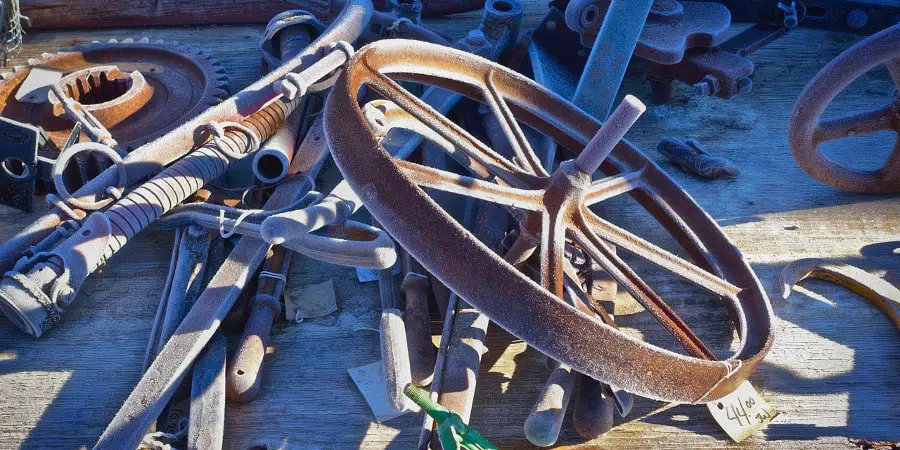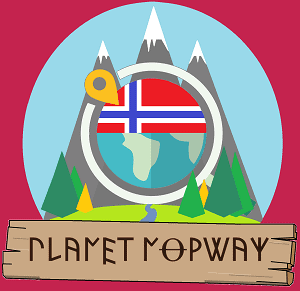Norway has a long and grand history of both strange and useful inventions.
From the handy cheese slicer to the important yet devastating harpoon cannon, Norwegians’ inventiveness has significantly impacted the wider world.
We’ll go through eight of the most interesting inventions and explain their historical significance. We’ll even examine some of the popular myths regarding one Norwegian invention and take a look at the history of modern skiing.

The cheese slicer
The cheese slicer is a kitchen utensil used to cut cheese into perfect individual slices. It was invented in 1925 by Norwegian carpenter Thor Bjørklund (1889-1975). He tried out a few different tools in his workshop for slicing cheese and found that his planer worked particularly well.
By 1927, he had sold over 50 million slicers. It was excellent from the start at cutting cheese, and the only improvements have been to speed up the production line.
Cheese slicers are very popular in Nordic and Germanic countries and are used to cut thin, even slices of cheese for semi-hard and hard cheeses.
Aerosol spray can
The aerosol spray can was patented by Norwegian engineer Erik Rotheim in November 1927. Before that, metal spray cans were being tested as early as 1862, but these were too bulky due to their steel construction for widespread use.
Rotheim’s can and valve system were the first to be commercially successful. The first spray paint cans were invented in 1949 in America, and the first bug spray came from the U.S. Army just before that.
By the 1970s, fluorocarbons were a big concern, leading to the redesign of the propellant in aerosol cans into water-soluble hydrocarbons, making them much safer to use today.
Modern skiing
Rock paintings and preserved skis show that skiing is at least 5000 years old. Skis were in regular use by Scandanavian people throughout the middle ages. In the 18th century, Scandinavian armies would host skiing competitions.
Before 1840, skis would be heavier in the middle and often sink in the snow. The modern ski, made of wood or plastic with a bowed construction, was developed in the province of Telemark, Norway.
Skis continued to be improved upon by savvy Norwegian throughout the 1800s, adding the sidecut and moving from ash to hickory wood for greater flexibility. They also started to arrange various skiing competitions, many of which are practiced to this day.
Improvements continued to be made into the 20th century, with plastics, metals, and laminates becoming popular materials, many of which were developed by Norwegians.
Simula programming language
Simula is an important forerunner to object-oriented programming, which is the standard today. It was developed in the 60s by two Norweigian computer scientists: Ole-Johan Dahl (1931-2002) and Kristen Nygaard (1926-2002).
Simula pioneered the main concepts of today’s object-oriented programming languages, including classes, objects, subclasses, frameworks, and automatic memory management.
Simula’s object-oriented programming changed the way much of programming was thought of at the time. It brought a new style of building computer programs that focused on a hierarchy of more or less abstract objects and their properties. For example, a car might have all the more abstract ‘vehicle’ class properties, plus some properties specific to cars alone, but not trucks.
The paper clip
Before the paperclip, people fastened papers with a waxed ribbon strung through a hole in each sheet or a straight pin like one does to hold a piece of fabric in place.
Johan Vaaler then invented a type of paperclip in 1899. His patent involved twisting a piece of wire into a spring, which one then used to bind the paper together. Unknown to Vaaler at the time, England’s Gem Manufacturing Ltd. company already produced the standard oval design, called a “Gem” clip.
Despite securing patents, Vaaler’s paperclip was never commercially produced and his patents expired quietly, while the “Gem”, which was never patented, was used worldwide, and remains the standard paperclip we use to this day.
The myth that the paperclip is a Norwegian invention originated from an engineer of the Norwegian national patent agency who visited Germany in the 1920s to register Norwegian patents.
Here he came across Vaaler’s patent but failed to detect that it was not the same as the then-common Gem-type clip. In a subsequent report, he wrote an article in which he proclaimed Vaaler to be the inventor of the common paper clip. This claim would later find its way into some Norwegian encyclopedias after World War II.
Additionally, In WWII, Norwegians were banned by the Nazis from wearing anything to support their king. Instead, they wore paperclips in protest. Although the myth of the paperclip being a Norwegian invention was not widespread at the time, it greatly fueled the myth following the war, and the myth lives on to this day.
The Tripp-Trapp children’s chair
The Tripp-Trapp children’s chair is a highly sought-after high chair invented by Norwegian Peter Opsvik in 1972. The sleek beechwood design was made to grow with your children while maintaining its beautiful design.
Slats at the bottom of the high chair allow the child’s feet to rest at different elevations, depending on their age. It was also designed to allow children to pull up right alongside the adults at the dinner table.
It later gained baby accessories to incorporate an even wider variety of ages.
The Birkeland – Eyde process
The Birkeland-Eyde process is an industrial process used to produce synthetic fertilizer. Developed by Norwegian industrialist Kristian Birkeland and businessman Sam Eyde in 1903, the process was at the forefront of synthetic fertilizers at the time, turning nitrogen from the atmosphere into nitric acid, which is a source of nitrate for soil.
It has since been superseded by the Haber and Ostwald processes which do the same thing more efficiently. However, this invention led to one of the biggest companies in Norway today, Yara International, which still specializes in Nitrogen-based fertilizers.
The harpoon cannon
Before 1864, whaling was considered a dangerous profession. This was because the small whaling boats allowed the wounded whale to drag the boat around.
In 1864, Svend Foyn invented the whaling harpoon cannon or gun, which significantly increased the stability and safety of whaling, transforming the industry. He continued to refine the cannon for decades until it became essentially the device we have today.
The ability to hunt for whales so easily that came with it led to some serious questions, especially with the invention of cannonball warfare.
